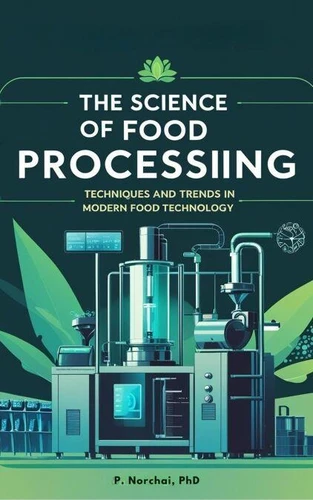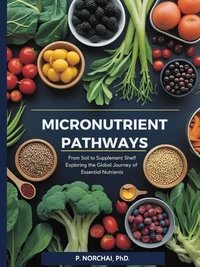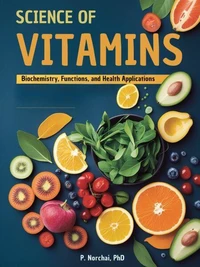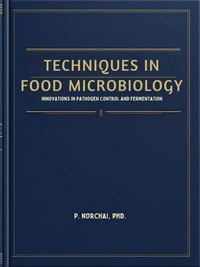THE SCIENCE OF FOOD PROCESSING: Techniques and Trends in Modern Food Technology
Par :Formats :
Disponible dans votre compte client Decitre ou Furet du Nord dès validation de votre commande. Le format ePub est :
- Compatible avec une lecture sur My Vivlio (smartphone, tablette, ordinateur)
- Compatible avec une lecture sur liseuses Vivlio
- Pour les liseuses autres que Vivlio, vous devez utiliser le logiciel Adobe Digital Edition. Non compatible avec la lecture sur les liseuses Kindle, Remarkable et Sony
 , qui est-ce ?
, qui est-ce ?Notre partenaire de plateforme de lecture numérique où vous retrouverez l'ensemble de vos ebooks gratuitement
Pour en savoir plus sur nos ebooks, consultez notre aide en ligne ici
- FormatePub
- ISBN8231499540
- EAN9798231499540
- Date de parution15/06/2025
- Protection num.pas de protection
- Infos supplémentairesepub
- ÉditeurWalzone Press
Résumé
The Science of Food Processing: Techniques and Trends in Modern Food Technology offers a comprehensive, research-based exploration of the principles, technologies, and innovations that define the global food processing industry today. Written for students, professionals, and researchers in the fields of food science, technology, and engineering, this authoritative volume connects foundational scientific knowledge with real-world industrial practices.
Across multiple in-depth chapters, the book examines the full scope of modern food processing-from the basic principles of heat and mass transfer to the kinetics of food spoilage and the integration of smart technologies like AI and IoT. Readers are introduced to the classification of food processing techniques (mechanical, thermal, chemical, and biological), the structure and behavior of food materials under various processing conditions, and the interplay of nutritional quality, safety, shelf life, and consumer expectations.
Key concepts such as water activity, pH, rheology, and sensory attributes are explained in detail, linking them directly to practical applications such as drying, pasteurization, fermentation, packaging, and preservation strategies. The text also addresses the historical evolution of food processing, the role of regulation and safety standards (such as HACCP and Codex Alimentarius), and the current innovations driving sustainable and ethical food systems, including high-pressure processing, cold plasma, and precision fermentation.
Designed to serve as both a textbook and a professional reference, the book includes a detailed glossary of terms and is written with scientific clarity and educational intent. Whether you are an undergraduate student just beginning your studies in food technology or a seasoned food technologist seeking to update your knowledge on cutting-edge developments, this book offers valuable insights and practical guidance.
In a time when food systems must balance safety, efficiency, nutrition, sustainability, and innovation, The Science of Food Processing delivers a timely and essential resource for understanding how food is transformed from raw agricultural materials into the safe, nutritious, and desirable products we consume every day.
Across multiple in-depth chapters, the book examines the full scope of modern food processing-from the basic principles of heat and mass transfer to the kinetics of food spoilage and the integration of smart technologies like AI and IoT. Readers are introduced to the classification of food processing techniques (mechanical, thermal, chemical, and biological), the structure and behavior of food materials under various processing conditions, and the interplay of nutritional quality, safety, shelf life, and consumer expectations.
Key concepts such as water activity, pH, rheology, and sensory attributes are explained in detail, linking them directly to practical applications such as drying, pasteurization, fermentation, packaging, and preservation strategies. The text also addresses the historical evolution of food processing, the role of regulation and safety standards (such as HACCP and Codex Alimentarius), and the current innovations driving sustainable and ethical food systems, including high-pressure processing, cold plasma, and precision fermentation.
Designed to serve as both a textbook and a professional reference, the book includes a detailed glossary of terms and is written with scientific clarity and educational intent. Whether you are an undergraduate student just beginning your studies in food technology or a seasoned food technologist seeking to update your knowledge on cutting-edge developments, this book offers valuable insights and practical guidance.
In a time when food systems must balance safety, efficiency, nutrition, sustainability, and innovation, The Science of Food Processing delivers a timely and essential resource for understanding how food is transformed from raw agricultural materials into the safe, nutritious, and desirable products we consume every day.
The Science of Food Processing: Techniques and Trends in Modern Food Technology offers a comprehensive, research-based exploration of the principles, technologies, and innovations that define the global food processing industry today. Written for students, professionals, and researchers in the fields of food science, technology, and engineering, this authoritative volume connects foundational scientific knowledge with real-world industrial practices.
Across multiple in-depth chapters, the book examines the full scope of modern food processing-from the basic principles of heat and mass transfer to the kinetics of food spoilage and the integration of smart technologies like AI and IoT. Readers are introduced to the classification of food processing techniques (mechanical, thermal, chemical, and biological), the structure and behavior of food materials under various processing conditions, and the interplay of nutritional quality, safety, shelf life, and consumer expectations.
Key concepts such as water activity, pH, rheology, and sensory attributes are explained in detail, linking them directly to practical applications such as drying, pasteurization, fermentation, packaging, and preservation strategies. The text also addresses the historical evolution of food processing, the role of regulation and safety standards (such as HACCP and Codex Alimentarius), and the current innovations driving sustainable and ethical food systems, including high-pressure processing, cold plasma, and precision fermentation.
Designed to serve as both a textbook and a professional reference, the book includes a detailed glossary of terms and is written with scientific clarity and educational intent. Whether you are an undergraduate student just beginning your studies in food technology or a seasoned food technologist seeking to update your knowledge on cutting-edge developments, this book offers valuable insights and practical guidance.
In a time when food systems must balance safety, efficiency, nutrition, sustainability, and innovation, The Science of Food Processing delivers a timely and essential resource for understanding how food is transformed from raw agricultural materials into the safe, nutritious, and desirable products we consume every day.
Across multiple in-depth chapters, the book examines the full scope of modern food processing-from the basic principles of heat and mass transfer to the kinetics of food spoilage and the integration of smart technologies like AI and IoT. Readers are introduced to the classification of food processing techniques (mechanical, thermal, chemical, and biological), the structure and behavior of food materials under various processing conditions, and the interplay of nutritional quality, safety, shelf life, and consumer expectations.
Key concepts such as water activity, pH, rheology, and sensory attributes are explained in detail, linking them directly to practical applications such as drying, pasteurization, fermentation, packaging, and preservation strategies. The text also addresses the historical evolution of food processing, the role of regulation and safety standards (such as HACCP and Codex Alimentarius), and the current innovations driving sustainable and ethical food systems, including high-pressure processing, cold plasma, and precision fermentation.
Designed to serve as both a textbook and a professional reference, the book includes a detailed glossary of terms and is written with scientific clarity and educational intent. Whether you are an undergraduate student just beginning your studies in food technology or a seasoned food technologist seeking to update your knowledge on cutting-edge developments, this book offers valuable insights and practical guidance.
In a time when food systems must balance safety, efficiency, nutrition, sustainability, and innovation, The Science of Food Processing delivers a timely and essential resource for understanding how food is transformed from raw agricultural materials into the safe, nutritious, and desirable products we consume every day.

















